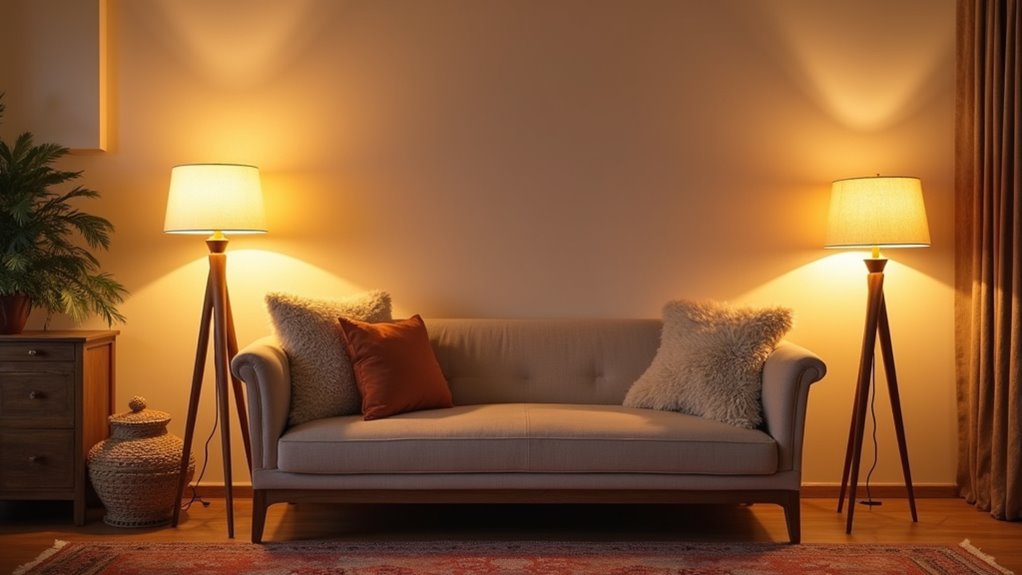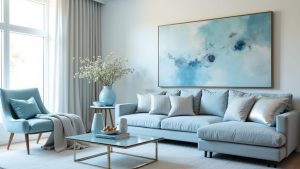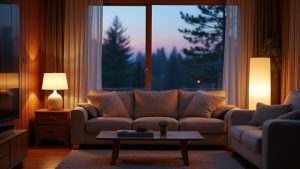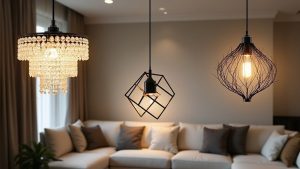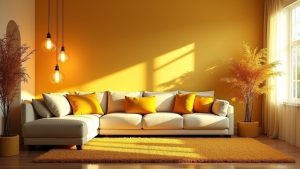Selecting the right lumens for living room lighting requires careful consideration. First, calculate total lumen needs based on room size, using the required foot-candles. Second, balance ambient and task lighting to enhance usability and comfort. Finally, adjust lumens according to ceiling height and wall color, as both factors significantly impact brightness levels. By taking these elements into account, one can create an inviting atmosphere. Explore further insights and tips to optimize lighting for any space.
Key Takeaways
- Calculate required lumens by multiplying room size in square feet by desired foot-candles, typically 10-20 for living rooms.
- Adjust lumens based on ceiling height; higher ceilings may require up to 80% more lumens for effective illumination.
- Balance ambient and task lighting for optimal usability, ensuring a combination of general and focused light sources.
- Consider wall color since light-colored walls reflect more light; darker walls may need double the lumens for adequate brightness.
- Opt for energy-efficient lighting, like LEDs, which consume less energy and can be paired with dimmer switches for adjustable brightness.
Calculate Your Total Lumen Needs Based on Room Size
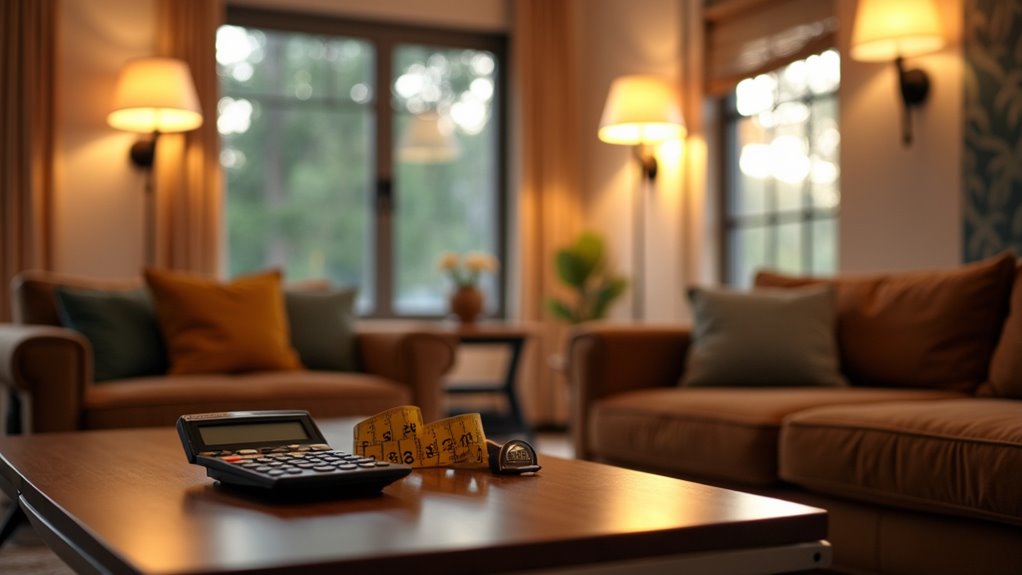
Calculating total lumen needs based on room size is essential for achieving optimal lighting in a living space. Lumen calculations begin with determining the room’s square footage and the required foot-candles, typically 10-20 for living rooms. For instance, a 100-square-foot room requiring 20 foot-candles needs 2,000 lumens. Higher-function areas, such as kitchens, demand 30-40 foot-candles, significantly increasing lumen requirements. Reflecting on ceiling height is critical; taller spaces disperse light, necessitating more lumens. Consequently, a 12’x12′ room with 11-foot ceilings may need 3,600 lumens. Additionally, total lighting requirements are quantified through the lumen method to ensure the correct luminous output tailored for the space’s use. Knowing that LEDs consume less energy compared to fluorescent lights can also influence your choice of lighting options while maintaining efficiency. Moreover, incorporating ambient light effectively enhances the overall atmosphere of the room, creating a more inviting environment.
Balance Ambient and Task Lighting for Optimal Functionality
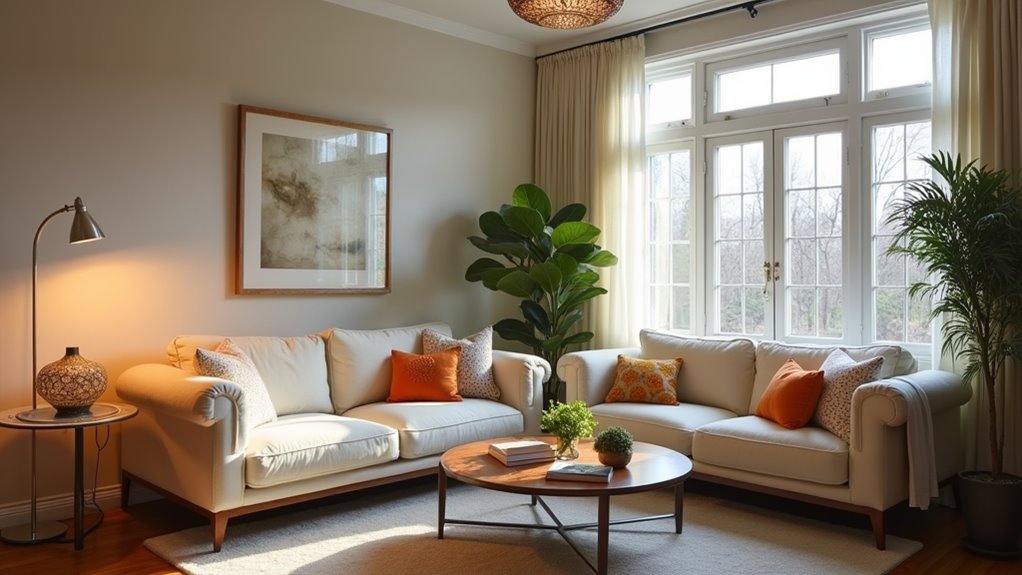
Achieving the right brightness in a living room extends beyond merely calculating lumens; it requires a thoughtful balance between ambient and task lighting elements.
Ambient lighting serves as the foundation, providing uniform illumination with fixture types such as ceiling-mounted or recessed lights. In contrast, task lighting delivers focused brightness for activities like reading, using dedicated fixtures like desk or floor lamps.
By strategically layering these lighting types, one can enhance usability and ambiance. Task lights should be positioned near seating or workspaces to avoid glare from ambient sources. Incorporating dimmer switches can further allow users to adjust the intensity, ensuring optimal functionality in varying scenarios. This balance prevents eye strain while creating a comfortable atmosphere.
Adjust Lumens According to Ceiling Height and Wall Color
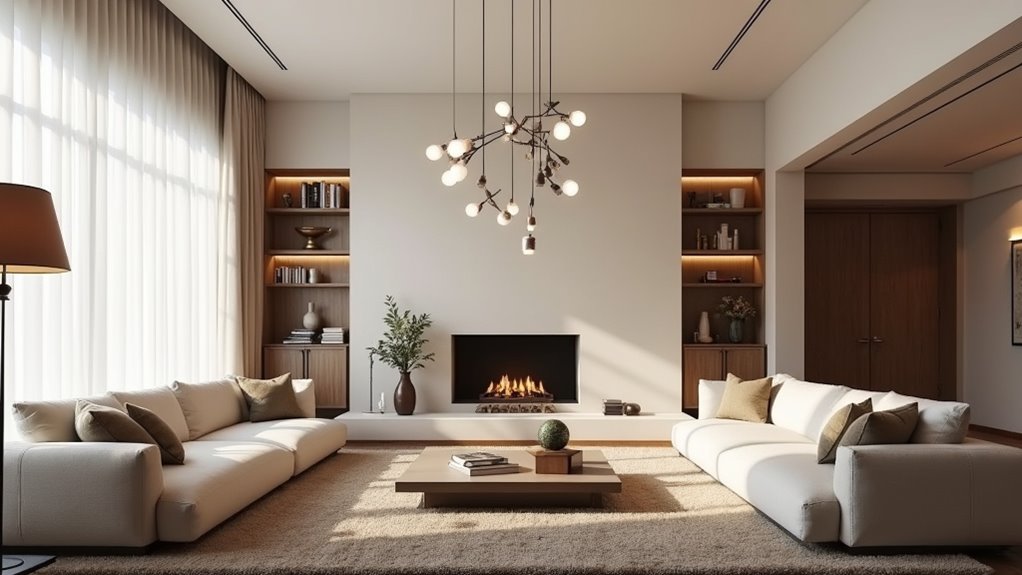
When determining the appropriate lumens for a living room, it is essential to consider both ceiling height and wall color, as these elements greatly influence the overall brightness and atmosphere of the space.
Ceiling height influences required lumens significantly; for instance, a 12-foot ceiling necessitates around 3,900 lumens compared to 2,800 lumens at typical heights.
Lumen adjustment techniques are crucial when accounting for wall color reflectance, where light-colored walls decrease lumen needs, while darker shades may require double.
Furthermore, incorporating downlights with narrow beam angles or dimmers assists in managing brightness effectively. Additionally, using high LRV colors for walls can enhance brightness and spatial perception.
Thus, harmonizing ceiling height and wall color ensures optimal illumination, enhances comfort, and improves energy efficiency throughout the living area.
